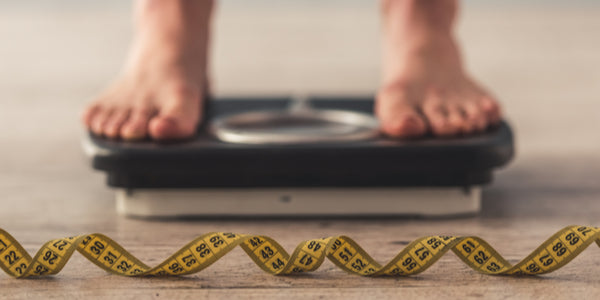
"How much should I weigh?" females and males alike often wonder. What's more, the media may skew what a healthy weight might be.
However, knowing how much you should weigh offers a glimpse into risks of chronic diseases and other health conditions.
Learn the basics of ideal body weight and how you might be able to use the information.
Understanding Ideal Body Weight
Ideal body weight (IBW) is fundamentally a weight derived from height and gender.
"What is the ideal body weight?" is controversial, though IBW is often described as the weight associated with the lowest mortality. It also serves as a reference tool for identifying risk factors tied to overweight and obesity.
The Hamwi and Devine equations are two primary formulas for calculating IBW.
Ideal Body Weight Calculator
Below explains how to use the Hamwi formula for men and women. Calculating your ideal weight requires knowing height in inches to convert an IBW in pounds.
Calculating Ideal Body Weight for Men:
IBW (pounds) = 106 + 6 X (Height – 60 inches)
For a 68-inch tall male, this would equate as:
106 + 6 X (68-60)
106 + 6 X 8
106 + 48
= 154 pounds
However, we are not all built the same and have varying frame sizes. To accommodate the disparities, there is a range surrounding ideal body weight, which is plus or minus 10 percent. With the above example, the range is between about 139 and 169 pounds.
Calculating Ideal Body Weight for Women:
IBW (pounds) = 100 + 5 X (Height – 60 inches)
For a 65-inch tall female, this would equate as:
100 + 5 X (65-60)
100 + 5 X 5
100 + 25
= 125 pounds
The 10 percent above or below range applies to women, too. So for an IBW of 125, a weight range would be about 113 to 138 pounds.
Calculating IBW using the Hamwi formula is only one method in answering, "How much should I weigh?" Other well-known methods include body mass index, waist circumference, waist-to-hip ratio, and body fat percentage.
Body Mass Index
Body mass index (BMI) is a measure of body fat based on both height and weight (mass). The equation for BMI is kg/m2, in which kg is a person's weight in kilograms. The m2 is the height in meters squared. In imperial units, the formula is BMI = lbs. x 703/in2.
Based on height and weight, the chart classifies underweight, normal, overweight, and obese statuses:

The precision of BMI is also mostly dependent on obtaining an accurate weight. Though natural weight fluctuations occur throughout the day, the number on the scale best reflects body weight in the morning. A more trustworthy number can also be determined after using the bathroom and without heavy clothing.
Waist Circumference
Targeted waist circumference is usually just above the belly button and below the rib cage.
It also varies between genders, or less than 40 inches for men and less than 35 inches for women.
Waist-to-Hip Ratio
A waist-hip measurement is the ratio (WHR) of the circumference of the waist to hips. It can be acquired by simply measuring the smallest circumference of the waist. Then, divide that number by the circumference of the hips at the widest part.
The ideal WHR for men is less than 0.9 and 0.85 for women according to the World Health Organization (WHO).
Body Fat Percentage
Body fat percentage is the weight of total body fat divided by total body weight. The result helps indicate essential and storage fats.
Essential fat is the amount of fat needed that is essential to survive. Women require a higher percentage than men to healthily support childbearing. Storage fat consists of fat accumulation, some of which protects our internal organs in the chest and abdomen. Other storage fat is excess that increases the risk of chronic disease.
Body fat and its percentage are measured through various methods. Once determined, it can be analyzed using the American Council on Exercise's ideal body composition percentage chart.

Benefits of Knowing Your Ideal Weight
Knowing ideal body weight helps serve as a tool regarding health status. However, it is important to note it is not definitive of true health.
Most formulas and ideal weight calculators are also very simple measurements. While a high IBW can increase the risk of chronic disease, it does not primarily dictate what you should weigh.
Think of this scenario: An athlete may have the same BMI as someone living a sedentary lifestyle of the same height. Based on BMI, the two will both be equally healthy. That is obviously not the case.
Experts say BMI underestimates the amount of body fat in people carrying excess weight. BMI also overestimates in athletes sporting extra muscle mass. That being said, consider a waist-hip ratio and total body fat percentage for a more accurate representation.
But even beyond weight status, one must also consider overall strength and the risks of heart disease and health conditions. Also recognize improved energy levels, mental health, and really, the total package when it comes to wellness.
Truly, understanding "How much I weigh" versus "How much should I weigh?" is a chance to modify lifestyle habits. This is not just to lose weight, but to improve overall health and add on precious years of life.







